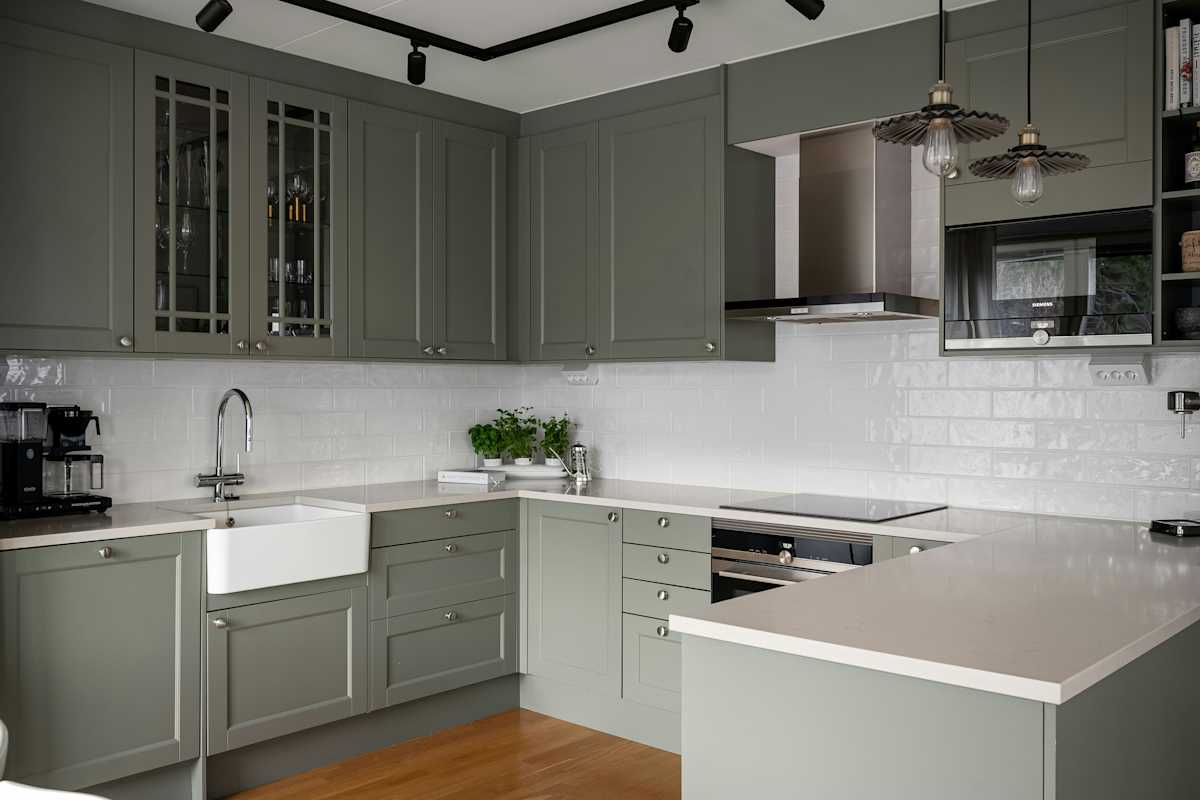How to clean tiles
In our homes, tiles and clinker are mainly found in kitchens and bathrooms—spaces we use every day.
In the bathroom, soap scum, limescale, and skin residue quickly accumulate on the tiles. Combined with the heat and humidity common in bathrooms, mold can easily form. In the kitchen, it's instead grease stains, fat deposits, and food residues that need to be removed.
It's important that both your kitchen and bathroom feel fresh and hygienic. Luckily, cleaning tiles is fairly simple. Here’s how to do it!
Clean regularly
If you clean your tiles on a regular basis, it becomes much easier to keep them spotless. Dirt, grease, and limescale won’t have the chance to build up or stick.
Make it a habit to clean the tiles in your bathroom once a week. In the kitchen, it’s a good idea to wipe down the tiles every day—at least the areas exposed to splashes from the sink and stove.
Simple cleaning agents for bathroom and kitchen
Glazed tiles have a very smooth surface, which makes them easy to clean. Often, warm water and a cloth are enough.
If that’s not sufficient, you may need to use a cleaning agent. A neutral cleaner will usually do the trick.
If you need something stronger, your choice will depend on whether you’re cleaning kitchen or bathroom tiles.
Vinegar and water are effective in the bathroom
Limescale buildup is common in bathrooms. That’s why an acidic cleaner is often needed. A spray bottle with equal parts vinegar and water is usually effective. You can also purchase a dedicated bathroom tile cleaner, which works just as well for cleaning bathtubs. It doesn’t need to be disinfecting, but it must dissolve limescale. Spray the walls and wipe them down with a cloth.
Degreasing cleaners for the kitchen
In the kitchen, grease is the main issue. Here, you’ll want an alkaline (basic) cleaner. There aren’t many well-known home remedies for greasy kitchen tiles, so it’s best to buy a gentle degreasing spray cleaner designed for kitchens. Spray it on, let it sit for a few minutes, and then wipe clean.
Clean the floor
Floors in kitchens and bathrooms are often made of clinker tiles. While similar to regular tiles, clinker is less porous and therefore more durable—ideal for floors, while traditional tiles are more common on walls. Clinker can also be used on walls in kitchens and bathrooms.
Clean the floor after you've cleaned the wall tiles. Start by sweeping or vacuuming. You can clean clinker just like tiles, and then mop with water and an all-purpose cleaner.
Don’t mistake marble or other porous flooring for clinker—those require special cleaners to avoid discoloration.
Clean the grout
Cleaning tiles is actually the easy part. The real challenge lies in the grout between the tiles, where dirt, grease, and soap residue accumulate.
A simple, proven, and eco-friendly way to clean grout is to mix equal parts water and baking soda into a paste. Apply it to the grout and let it sit for a few minutes. Then scrub with a toothbrush.
Mold in grout is uncommon, but if it does appear, the best solution is a dedicated mold remover.
If you can’t get the grout clean, it’s relatively easy to re-grout a tiled wall. Use a grout scraper to remove some of the old grout and apply new grout afterward.
Need help?
We offer professional home cleaning services across Sweden—including Stockholm, Gothenburg and Uppsala, among many other cities.
